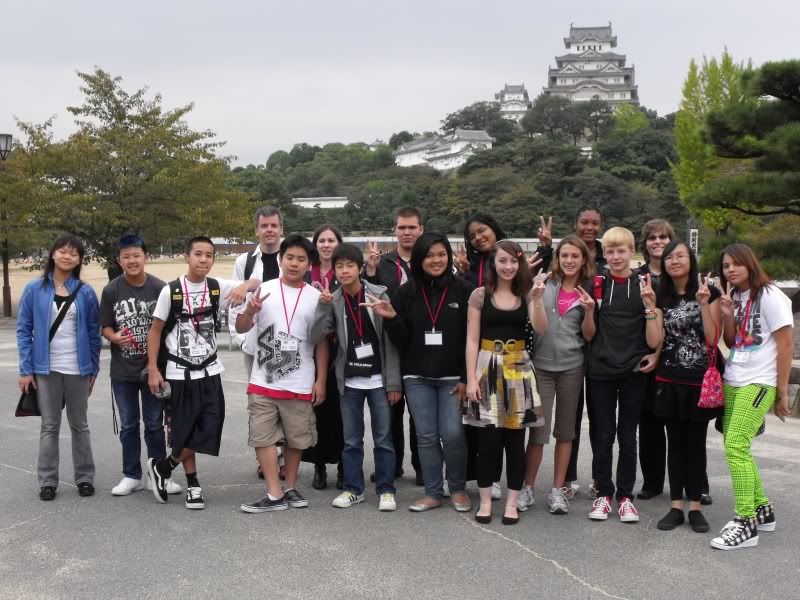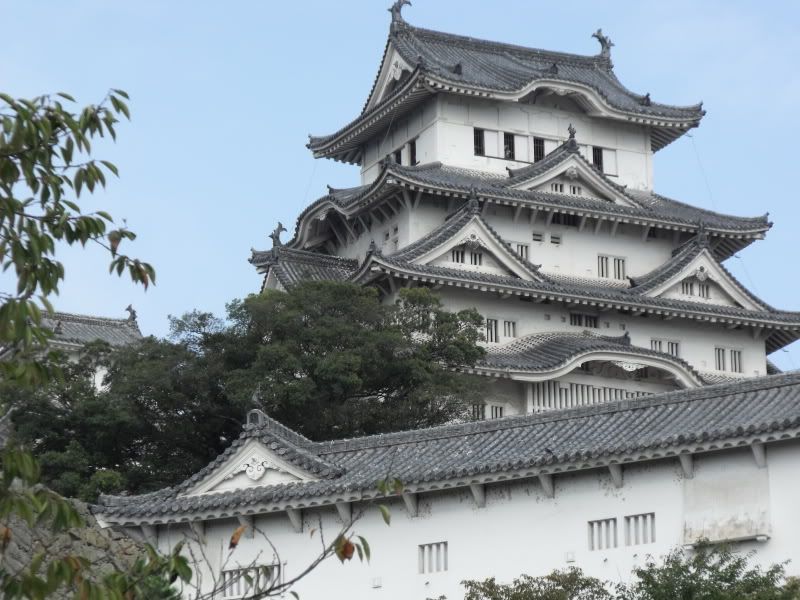How different, you ask? For starters, Japanese buildings aren't insulated. Insulation is something very new to Japan. If you live in a building that has been built in the couple of years, you have a high chance in being in a rare insulated building, but even then, it might not be as insulated as a western building. While you may be fortunate enough to have insulation, you still won't have central heating. During my adventures around Japan, I've noticed that only places of business seem to have any kind of ventilated heating system.
The really bad thing about the lack of these two familiar things is that when it's cold outside, it's cold inside. Yeah, 10ºC may not be cold, but when you're constantly surrounded by it, it gets pretty uncomfortable. This is especially true of my jr high school which doesn't have closed in hallways, so when you open a door, you're outside again. There's very little protection from the elements.
See? It's pretty crazy, right? But do not give up hope, reader! There are few simple ways to stay warm.
Blankets: The easiest way to stay warm is, of course, to wrap yourself up in a blanket. And I don't just mean at home. It seems to be a perfectly, socially acceptable to wrap your legs in a blanket at work. Almost every teacher at my school has a blanket draped over their chair. The women's blankets are predominantly designed with some sort of cartoon character, while the men's are a simple design along the lines of stripes or polka-dots. Mine is purple with black cartoon cats on it.
Hand warmers: I've only ever seen hand warmers in the movies, and even then, never in a Canadian movie. Hand warmers are little packets that magically warm up and keep you warm you up when you hold onto one. They're very popular and inexpensive. You can buy a box of 30 for about ¥500 ($5).
Electric Space heaters: Space heaters in Japan vary more than anything else in Japan. They come in various shapes, sizes, power levels and even power sources. You can choose a kerosene/electric hybrid, or just an electric heater. You can buy a large one that resembles a radiator or a tiny round one that fits on your table. Japanese air conditioners also come with a heating function, but they use a lot of energy and it takes a long time for the whole room to fill with warmth. The down side to these heaters is that they are very drying. To counter this, some of the more extravagant ones come with a humidifier option.
Mini-kotatsu: I don't think the Japanese refer to them as mini-kotatsu, but I know that these little pink boxes are referred to as a kotatsu, so I'm using mini to just help distinguish between the two. Anyways, a mini-kotatsu is a little heater for your bed. You place it under your sheets, plug it in, turn it on, and enjoy the electric warmth.
Hot water bottles: When I say hot water bottles, you probably get an image of a soft rubber bottle that you apply to your body when you're not feeling well. The Japanese version is quite different from that. It is made of a very hard plastic that is shaped much like the mini-kotatsu, and like the mini-kotatsu, it is used to keep your bed warm. I don't know how well this item works, having never tried it. I'm still trying to figure out if it stays warm all night, or if it just makes your bed uncomfortable when the water finally goes cold.


